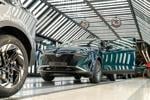Used car dealers have always had to adjust to changing market conditions.
Adaptation to fluctuations in supply, changes in retail demand, value
movements and the ever-changing habits of the media-led fashion-conscious buyers are all in a day’s work.
And in the last 12 months they have been busier than ever in a bid to maintain turnover.
Manufacturer surpluses of new or nearly new cars have diminished and the supply of ex-rental vehicles has all but dried up.
All of which leaves dealers with re-stocking problems, particularly as the majority of buyers want the same cars.
And there are no signs that this will improve for some time.
As margins continue to be squeezed and the availability of quality vehicles is at what some have described as an all time low, it is therefore not surprising that many dealers are looking to retail older cars or even higher mileage examples.
We would expect this trend to continue in the months to come.
While values of late, low mileage small cars have gone through the roof, those for most other cars are now back to what can be called normal levels.
In other words, most values are at a similar level to where they would have expected to be before the recession.
Retail demand in the used market has fallen off, perhaps as those with savings have now spent up or have already taken advantage of the scrappage scheme.
Perhaps this is in line with the usual summer lull.
So will the new plate in September bring any relief?
Unlikely. Analysts don’t expect natural market confidence to appear until early next year.
This year will be remembered as the year of the small car.
Many drivers have downsized by either choice or necessity and some may never revert back.
So is any of this new? Used cars have always been and will always be valued by the supply and demand balance. In the past many dealers have gone out of business as they failed to adjust to the changing market conditions.
Today is no different. Dealers must adapt to survive.












Login to comment
Comments
No comments have been made yet.